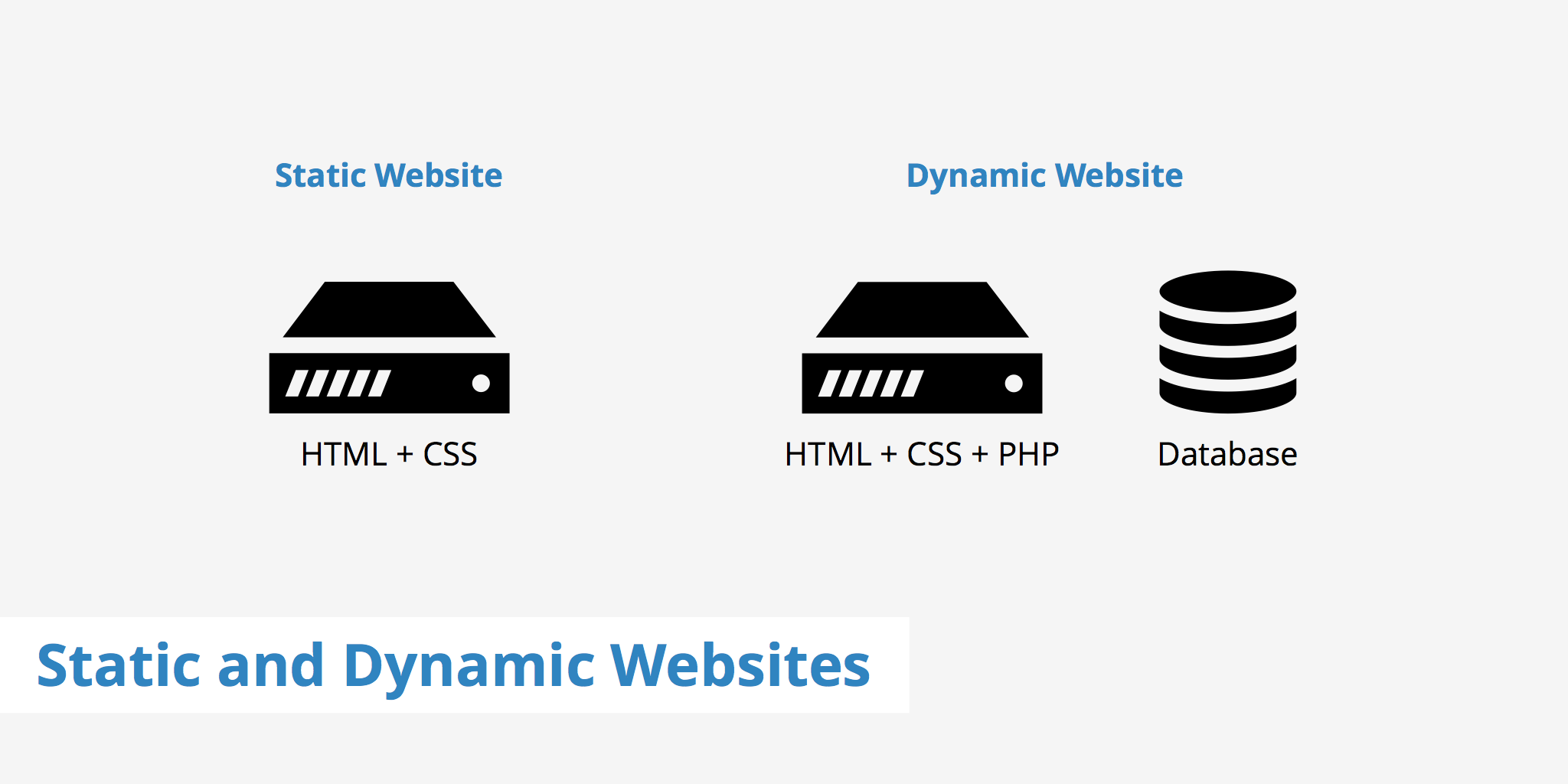Difference Between Static and Dynamic Websites

When creating a website you can decide whether the site should be static or dynamic. There are pros and cons to both methods which should be addressed before making a decision. This article aims to focus on the difference between static and dynamic websites in order to provide a better understanding of each.
What is a static website?
A static website is one which does not make use of any external database and is written completely in HTML. This means that every user who visits that website will receive the exact same information. Additionally, making updates to static websites means going directly into the HTML and making the changes from there.
Although there are a vast amount of website that prefer to show dynamic content to their visitors, the growth of static websites is on the rise.
This growth is largely due to the increasing number of static site generators being created and used for various purposes. The section below will outline a few pros and cons to using a static website.
Pros
- Less complex to develop
- Usually faster loading times and smaller page size
- All assets can be cached for even faster page speed
Cons
- Non-interactive
- Updates must be made directly within the HTML code
- Cannot perform the complex functionality required in many modern sites
What is a dynamic website?
A dynamic website on the other hand, can generate content based on the user. Think of Facebook as an example, when you login, you are greeted by a page of updates tailored to you based on your likes, friends, etc. This page of content is specific to you as a user and will update dynamically as time goes on.
A dynamic website can also make it easier for a user without any HTML knowledge to update data on the website. Many dynamic websites built on Content Management Systems (CMS) make it simple to update information through an easy to use interface. Dynamic websites also make use of a server side language (e.g. PHP, Java, etc) and a database where all posts, pages, and media are stored.
The section below lists a few pros and cons to using a dynamic website.
Pros
- Dynamic content generation based on user
- Easily update content when used with a CMS
- Able to use it in more complex scenarios such as an online store, forum, social media platform, etc
Cons
- May be slower than a static site due to the increase in required resources
- More complex to develop
- Greater risk of security issues
Choosing between a static vs dynamic website
Choosing between using a static vs dynamic website really comes down to what the website is required to do. The difference between static and dynamic websites is quite vast in terms of functionality. However, in the case that your website does not require much functionality (e.g. a documentation site) then a static site may be the best option. In this scenario, the website requires minimal complexity and therefore does not need an external database along with additional resources that will only increase loading times.
Alternatively, if you require more complex functionality then a dynamic website is the way to go. There is no doubt that building a dynamic website from scratch will require more time / money to accomplish as compared to a static website. However, there are many open source CMS platforms that allow you to "hit the ground running" so to speak. Many CMS's allow you to perform specific tasks such as sell products online or start an online community forum.
Weighing the pros and cons that illustrate the difference between static and dynamic websites should help in determining which one to use for your web project.